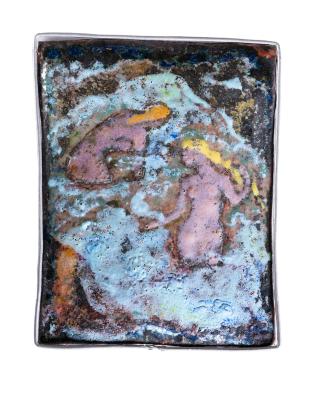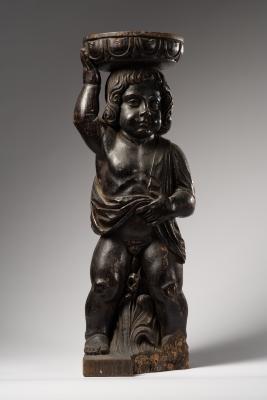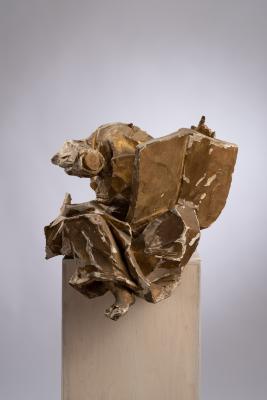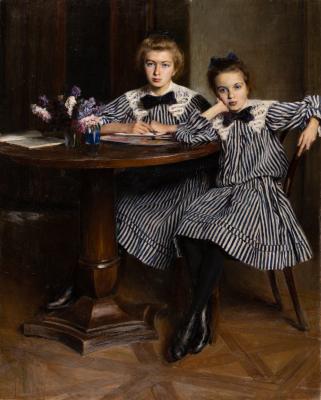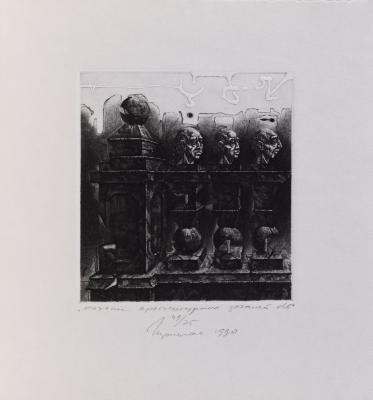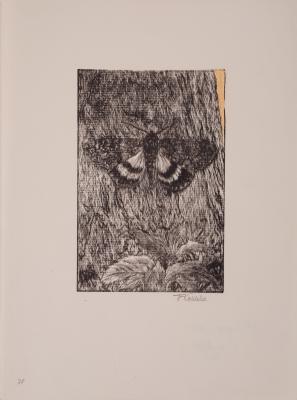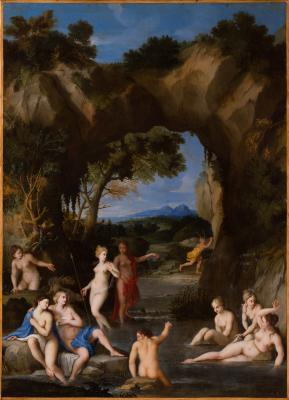The composition is known from the album Raccolta di Cinquanta Costumi li più interesanti delle città, terre e paesi in provincie diverse del Regno di Napoli (Collection of Fifty Most Interesting Picturesque Costumes from Cities, Towns and Villages of Different Provinces of the Kingdom of Naples) published in Rome in 1817. The album presented it as an etching that was not painted with watercolours. In its colour version, the engraving was known from the album published in 1816. The Lviv version differs from it in brighter colours. In the foreground, one can see two figures, namely a young man depicted in profile sitting near a stone and playing a piffero and a young girl dressed in traditional festive clothing, who approached the man, fascinated by music. Her hand is touching a branch of a young tree with small red fruits. The girl is wearing a yellow and blue dress with peculiar cuffs and epaulettes, a long skirt of the same colours, and an apron with floral motifs put on over it. A headscarf is on her head; on her feet are red lace-up shoes. The young man is wearing a blue camisole and a red jacket, narrow trousers and knee socks; black shoes are on his feet; on his head, there is a wide-brimmed hat. The action occurs in the background of a valley with trees where the outlines of a high mountain range are seen in the distance.
Piffero is a wind instrument, a kind of pipe or surma-horn, an analogue of the Ukrainian shawm. It is called pipita in the southern regions of Italy.





